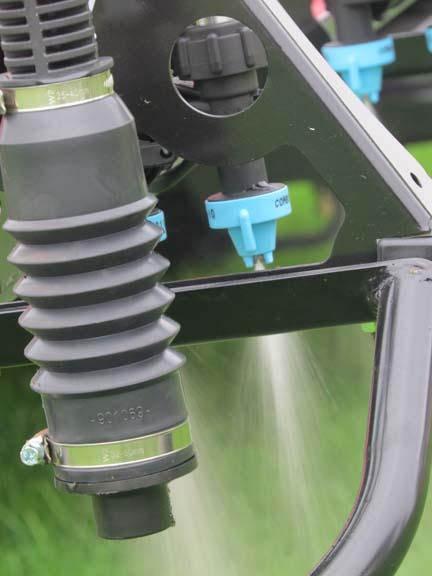Controlling pink or gray snow mold might not be a topic that is top of mind in August, but maybe it should be, according to the Green Solutions Team at Bayer.
 "While August seems very early to be thinking about snow mold, for golf courses in the far northern tier of the country and the Rocky Mountain region, permanent snow cover can occur as early as October," said Rob Golembiewski, Ph.D., of Bayer's Green Solutions Team. "Add to the fact that snow mold sclerotia germinate in the fall when temperatures are between 50-65 degrees (Fahrenheit) yielding spores and mycelium that cause new infections, preventative fungicide applications are commonly initiated in late August/early September to maximize control in the spring."
"While August seems very early to be thinking about snow mold, for golf courses in the far northern tier of the country and the Rocky Mountain region, permanent snow cover can occur as early as October," said Rob Golembiewski, Ph.D., of Bayer's Green Solutions Team. "Add to the fact that snow mold sclerotia germinate in the fall when temperatures are between 50-65 degrees (Fahrenheit) yielding spores and mycelium that cause new infections, preventative fungicide applications are commonly initiated in late August/early September to maximize control in the spring."Just like a pilot in the cockpit of a plane, there is a pre-flight checklist for snow mold control, and it's better to go over it sooner rather than later.
That list includes checking sprayer nozzle calibration and coverage, consider an early fungicide application, protect young turf and compromised turf, use multiple active ingredients, reapply after heavy rains.
Snow molds can affect any cool-season turf, but creeping bentgrass and annual bluegrass are more susceptible than other cultivars, like Kentucky bluegrass, perennial ryegrass and fescues, Golembiewski says.
He recommends fungicide applications, either a DMI or dicarboxamide, every two to four weeks until a final app is made when top growth has stopped and prior to permanent snow cover. The number of active ingredients. That last application, Golembiewski says, should be a tank mix of multiple chemistries depending on historic local conditions.
Care should be taken for new turf, which can be especially susceptible to disease because of high fertility rates, areas under stress. That includes areas that shaded, drain poorly, are compacted or are subject to high stress, and might also mean implementing cultural practices to simultaneously promote drainage, air exchange and healing.
Controlling that and avoiding late-season fertility applications in established turf can help make turf less susceptible to damage throughout the winter..
"Shaded areas, compacted clean-up and traffic areas, under-fertilized, and otherwise somewhat compromised areas may be more susceptible to snow molds," Golembiewski said. "To protect these susceptible areas, implement cultural practices to mitigate stress and ensure a good fungicide program is in place to maximize control."
For those not concerned with snow mold, Bayer's Zac Reicher and Laurence Mudge also offered late-season tips for controlling annual bluegrass in warm-season turf.
Annual bluegrass seed germinates in late summer or early fall, or when soil temperatures fall below about 70 degrees, according to Jim Beard's research. That also coincides with the prime growing season for warm-season grasses winding down in many areas. Germination can continue throughout the winter months. Because a single plant is capable of producing up 6,000 seeds, seed management is a critical component of controlling annual bluegrass.
Among the tips offered by Bayer include a preventive fungicide application prior to seed germination. Some active ingredients can damage newly established warm-season turf, so it is important to check labels before making any applications.
Other tips include managing fertility, raising height of cut, regular aerification to mitigate soil compaction and moisture management.
Regular aerification in spring and fall also is important, however, fall coring actually can help spread annual bluegrass seed.
"It makes more sense to pull cores in late spring or summer when annual bluegrass is not germinating," Reicher says. "That's a tough task to schedule during periods of high golf, high water use, and significant turfgrass stress."
He offers solid or needle tine aerification as an alternative.
Raising height of cut, even just a little, he said, also will promote the desired turf.

